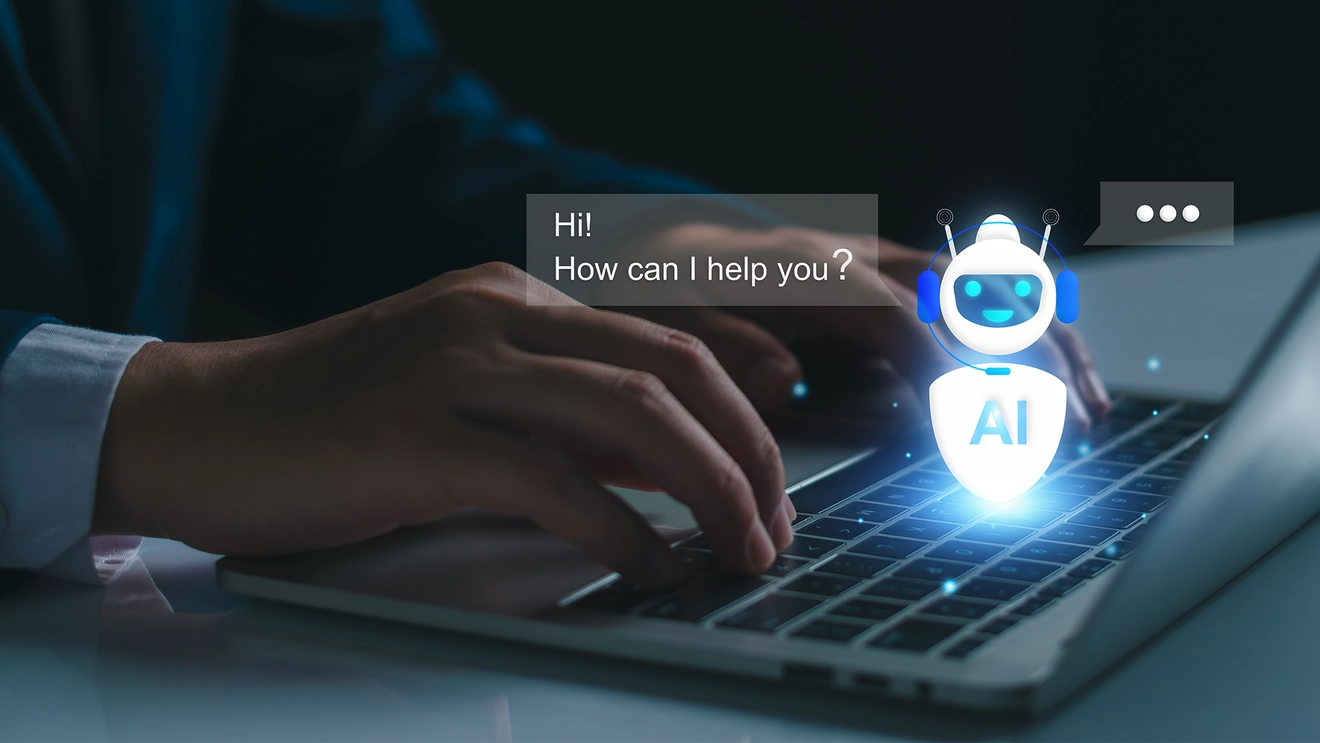Implementing an AI Chatbot for Customer IT Support: A Practical Guide

Modern customers expect efficiency and quick responses, which is why AI chatbots have become a game-changer for IT support. With the ability to provide 24/7 assistance, handle repetitive queries, and improve response times, AI chatbots allow IT teams to focus on more complex tasks. But how do you implement one effectively? Let’s break it down.
Why Use AI Chatbots for IT Support?
AI chatbots bring several advantages:
-
Always Available: Your customers get instant support any time of the day or night.
-
Faster Resolutions: Chatbots can handle common issues like password resets or basic troubleshooting in seconds.
-
Cost-Efficient: Reduce the need for a large support team and scale up without increasing overhead costs.
-
Actionable Insights: Chatbots gather data on customer issues, helping IT teams address recurring problems.
Considerations to Make Before Implementing a Chatbot
Before diving into the world of AI chatbots, it’s important to consider the following factors to ensure a smooth and successful implementation:
- Understanding Your Audience's Needs
Not every customer prefers interacting with a chatbot. Assess whether your audience would benefit from or prefer using a chatbot for their support needs. Some customer bases may still prefer human interaction, particularly for complex or sensitive issues.
- Defining the Chatbot's Scope
Determine the specific tasks your chatbot will handle. Will it be limited to basic troubleshooting, or will it integrate with other systems for more advanced support? Clearly defining the chatbot's role will help set expectations and avoid over-promising its capabilities.
- Seamless Escalation Process
Ensure there is a clear and efficient way for the chatbot to escalate complex issues to human agents. The transition should be smooth and timely, ensuring customers don’t feel abandoned or frustrated when the bot can't resolve their issue.
- Customization and Personalization
Chatbots need to reflect the brand's voice and personality. Consider how much customization is required to make the chatbot feel aligned with your brand and how it will address customers in a way that feels personalized.
- Training and Maintenance
Even after deployment, chatbots require continuous training and updates. Customer inquiries evolve, and so must the bot’s ability to handle new questions. Make sure your team is prepared to continually improve the chatbot’s knowledge base and responses.
- Data Security and Privacy
Chatbots often handle sensitive information. Consider how the chatbot will secure customer data and comply with relevant privacy regulations like GDPR or CCPA. This is critical to maintain trust with your users.
Will AI Chatbots Replace Human Support Specialists?
The rise of AI chatbots has led to speculation about whether they will eventually replace human customer support specialists. While chatbots offer many benefits, the short answer is: not entirely.
AI chatbots excel at handling repetitive tasks, answering simple questions, and offering immediate responses. This can significantly lighten the load on human agents, allowing them to focus on more complex and critical issues. However, there are several reasons why human support specialists will continue to play a vital role:
- Handling Complex Issues
Despite advancements in AI, chatbots struggle with nuanced problems that require empathy, creative problem-solving, or technical expertise. Human specialists are still essential for addressing these more complex or emotionally charged situations.
- Emotional Intelligence and Personal Connection
While AI can simulate basic conversational patterns, it lacks genuine emotional intelligence. Human agents can provide empathy, build rapport with customers, and diffuse tense situations in ways that chatbots simply cannot.
- Adaptability
Humans can think outside the box, troubleshoot unfamiliar problems, and provide unique solutions on the fly. Chatbots rely on pre-programmed knowledge and responses, which limits their ability to adapt to novel situations.
- Trust and Accountability
Some customers are more comfortable interacting with a human, especially for high-stakes or sensitive issues. Human agents can offer the reassurance and accountability that customers may require in these cases.
In summary, while AI chatbots are a valuable asset for streamlining IT support, they are best viewed as a complementary tool rather than a replacement for human specialists. By working alongside human teams, AI can enhance the customer support experience without sacrificing the quality and personal touch that only humans can provide.
Steps to Implement Your AI Chatbot
- Define the Purpose
Start by identifying the most frequent issues your chatbot will address, such as basic troubleshooting or network support.
- Choose a Platform
Popular chatbot platforms like IBM Watson or Google Dialogflow offer powerful tools with natural language processing. Choose one that integrates well with your existing systems like helpdesk or CRM software.
- Design the Conversation Flow
Map out clear paths for common customer queries and plan for escalation to human agents when needed.
- Train the Chatbot
For an AI-driven chatbot, feeding it historical data on customer issues will help it learn and improve. Update the chatbot regularly with new information and processes.
- Test and Monitor
Test extensively before launch to ensure the chatbot responds accurately and escalates appropriately. After launch, continue monitoring its performance and optimizing as needed.
Ongoing Training and Skills
Implementing and maintaining AI chatbots requires skills in areas like natural language processing, machine learning, and IT integration. ACI Learning Tech Academy offers several courses to help IT professionals stay ahead, such as:
-
AI and Machine Learning Fundamentals: Learn the basics of AI and how to apply them in practical settings.
-
Chatbot Development with Python: A hands-on course on building AI-powered chatbots using Python.
-
ITSM Integration Training: Understand how to integrate AI tools with IT service management platforms for seamless operation.
ACI Learning Tech Academy and you
Ready to advance in your career? We offer classes online, on campus, during the day, and at night through our Tech Academy locations: San Antonio, Dallas, Colorado Springs, and most of the rest of the USA through our online campus. If you're interested in learning more, reach out to our staff today. We'll match you up with the best certifications for your career goals.



